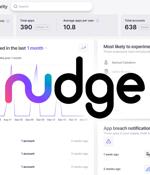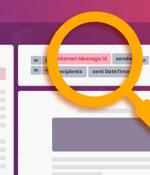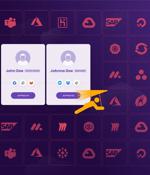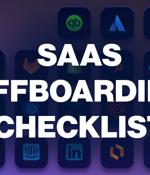Security News

If forecasters are right, over the course of today, consumers will spend $13.7 billion. Just about every click, sale, and engagement will be captured by a CRM platform. Inventory applications will...

Nudge Security is the world's first and only solution to address SaaS security and governance by working with employees-not against them. The platform distributes SaaS administration without sacrificing visibility, centralized governance, or control over the organization's cloud and SaaS security posture.

Marketing apps such as Salesforce, Hubspot, Outreach, Asana, Monday, and Box empower marketing teams, agencies, freelancers, and subject matter experts to collaborate seamlessly on campaigns and marketing initiatives. In this article, we explore the top Marketing SaaS application use cases, from external users and publicly shared links to connected apps and credit cards - and how to ensure the security and integrity of the data stored within them.

Wing Security, a SaaS security company, announced yesterday that their SaaS shadow IT discovery methods now include a solution that solves for auto-email forwarding as well. Bad actors can use these email forwarding rules to exfiltrate data after a successful attack, or as a means to spread phishing campaigns within organizations.

SaaS applications make up 70% of total company software usage, and as businesses increase their reliance on SaaS apps, they also increase their reliance on those applications being secure. These SaaS apps store an incredibly large volume of data so safeguarding the organization's SaaS app stack and data within is paramount.

This new product offers SaaS discovery and risk assessment coupled with a free user access review in a unique “freemium” model Securing employees' SaaS usage is becoming increasingly crucial for...

SaaS Security’s roots are in configuration management. An astounding 35% of all security breaches begin with security settings that were misconfigured. In the past 3 years, the initial access...

Today, mid-sized companies and their CISOs are struggling to handle the growing threat of SaaS security with limited manpower and tight budgets. Now, this may be changing. By focusing on the...

LUCR-3 overlaps with groups such as Scattered Spider, Oktapus, UNC3944, and STORM-0875 and is a financially motivated attacker that leverages the Identity Provider (IDP) as initial access into an...

Download this template from Nudge Security for the essential steps of IT offboarding in the age of SaaS. This employee offboarding checklist covers the murky territory of offboarding SaaS access for departing employees-a land of common pitfalls and missed steps. Download a tailored Google Sheet outlining the eight essential steps of employee IT offboarding, fine-tuned to ensure business continuity and data security in our increasingly remote, distributed, SaaS-first world of work.